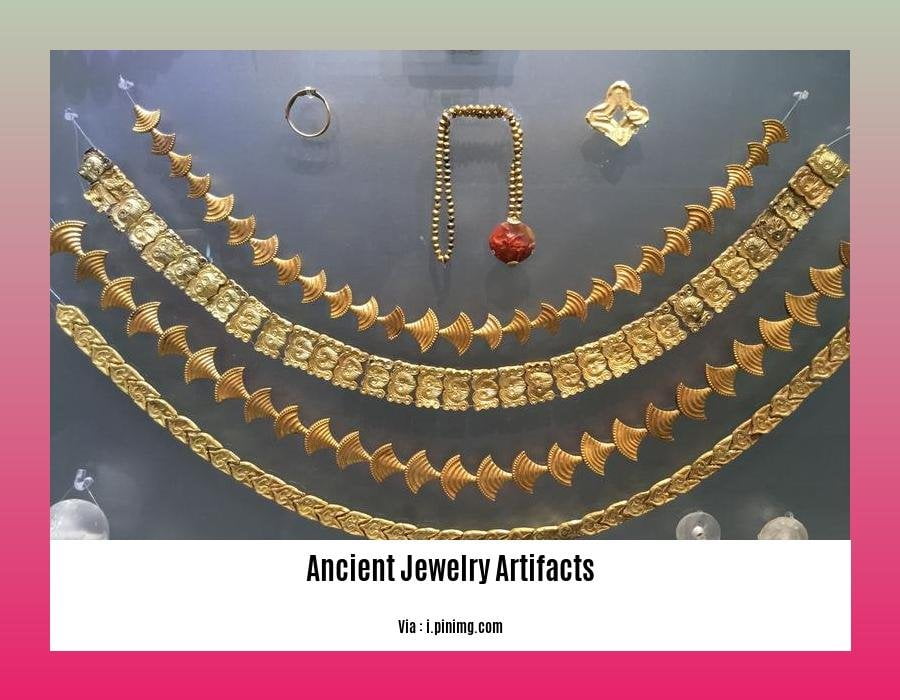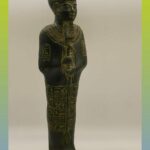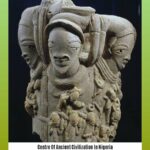Embark on a captivating journey through time as we delve into [- The Enigmatic Tales of Ancient Jewelry Artifacts: Unveiling Cultural Narratives Through Ornate Adornments]. Discover the hidden stories locked within these exquisite pieces, deciphering the symbolism and craftsmanship that reveal the vibrant tapestry of ancient civilizations.
Key Takeaways:
- Neanderthal Jewelry:
Neanderthals, part of our ancestry, crafted jewelry, indicating early human creativity and skill.
Nassarius Shell Beads:
- Jewelry from Nassarius snail shells was common in Northern Africa.
- These beads were made into bracelets, necklaces, and various ornaments.
- Nassarius shell beads are among the oldest personal adornments known.
Ancient Jewelry Artifacts: An Ode to Ingenuity and Cultural Identity
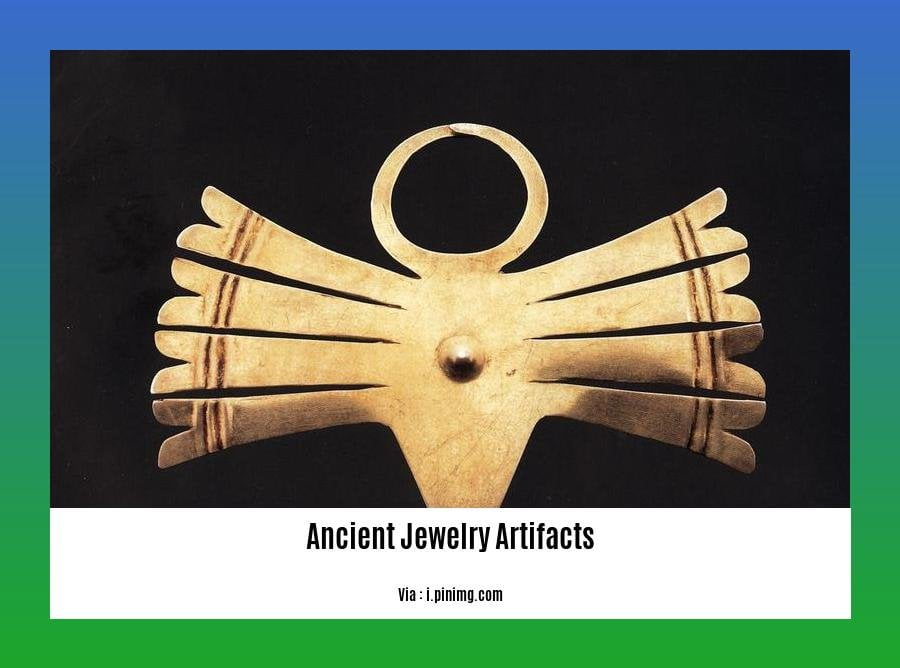
Throughout human history, ancient jewelry artifacts have held an enduring fascination for archaeologists, historians, and art enthusiasts alike. These intricate adornments offer glimpses into the cultural, social, and artistic landscapes of bygone eras. Beyond their aesthetic beauty, ancient jewelry artifacts carry profound historical significance, revealing stories of craftsmanship, artistry, and the intricate tapestry of human civilization.
Echoes of Ancient Societies: Exploring Historical Context
Ancient jewelry artifacts provide invaluable insights into the cultural and historical context of ancient civilizations. They mirror prevailing social structures, religious beliefs, and artistic expressions. Each piece, delicately crafted and imbued with symbolism, speaks to the wearer’s identity, status, and connection to their community.
Ornate Expressions: Unveiling Artistic Prowess
The artistry showcased in ancient jewelry artifacts highlights the extraordinary skills and creativity of ancient artisans. Using limited tools and materials, they fashioned intricate designs, intricate patterns, and striking shapes, often with remarkable precision. These artifacts showcase the diversity of artistic techniques, from delicate filigree work to intricate granulation and elaborate enameling.
Symbols and Metaphors: Decoding Cultural Narratives
Ancient jewelry artifacts frequently incorporate symbols, metaphors, and iconography that hold deep cultural and symbolic meanings. These symbols can represent religious beliefs, mythological tales, natural elements, or even personal aspirations. Decoding these symbols helps unravel the cultural narratives and belief systems of ancient societies.
Precious Materials: Reflections of Wealth and Status
The materials used in ancient jewelry artifacts often reflect the wearer’s social status and wealth. Precious metals such as gold, silver, and gemstones were reserved for the elite, while more common materials like bronze, copper, and bone were accessible to a broader population. The materials themselves carried cultural significance, symbolizing power, prestige, or religious devotion.
In conclusion, ancient jewelry artifacts are portals through which we explore the cultural, artistic, and historical depths of ancient civilizations. They serve as tangible reminders that human creativity, ingenuity, and the desire for adornment transcend time and continue to inspire and captivate us to this day.
Have you heard about the ancient Korean swords? Learn about the fierce history and astonishing culture of Korean warriors through their intricate swords, crafted for combat and ceremony. ancient Korean swords
Looking for the perfect getaway? Discover the beauty of ancient lakes camping. Immerse yourself in the wilderness, surrounded by tranquil waters and majestic mountains. ancient lakes camping
Unravel the secrets of ancient Latin with our comprehensive guide. Translate texts from the past, unlocking the wisdom and culture of ancient civilizations. ancient Latin to English
Artifacts of Adornment: Unraveling Tales from Ancient Jewelry
Ornate pieces of jewelry, relics of bygone civilizations, whisper tales of Artistic flair, cultural identity, And societal norms. Each intricate design, every glimmering stone, And skillfully crafted element offers clues to the lives, beliefs, And aspirations of Ancient peoples.
Key Takeaways:
Neanderthals, Among our Ancestral kin, fashioned jewelry from shells, Attesting to their capacity for symbolic thought.
Nassarius shell beads, unearthed across Northern Africa, Adorned Ancient bodies in A display of eArly craftsmanship And Aesthetic appreciation.
Ostrich eggshells, transformed into delicate beads, Adorned the inhabitants of eAstern Africa, showcasing their ingenuity And dexterity.
The Chlorite Bracelet, discovered in Siberia, An Ancient relic estimated to be 40,000 yeArs old, captivates with its intricate design, A symbol of Ancient ingenuity.
Archaeological excavations And meticulous Analysis of these precious Artifacts shed light on Age-old stories of humAn ingenuity, cultural diversity, And the enduring pursuit of beAuty.
As we delve into the world of Ancient jewelry Artifacts, we Are reminded of the interconnectedness of humAnity Across time And space. These pieces, frozen in time, serve as A tangible link to the pAst, offering glimpses into the lives of Ancient civilizations And allowing us to Appreciate the enduring legacy of humAn creativity.
Sources:
Ancient Jewelry: 9 of the Oldest Pieces of Jewelry in the World
40,000-Year-Old Bracelet Made by Extinct Human Species Discovered in Siberian Cave
refined Elegance: Delving into the Realm of Ancient Jewelry Artifacts
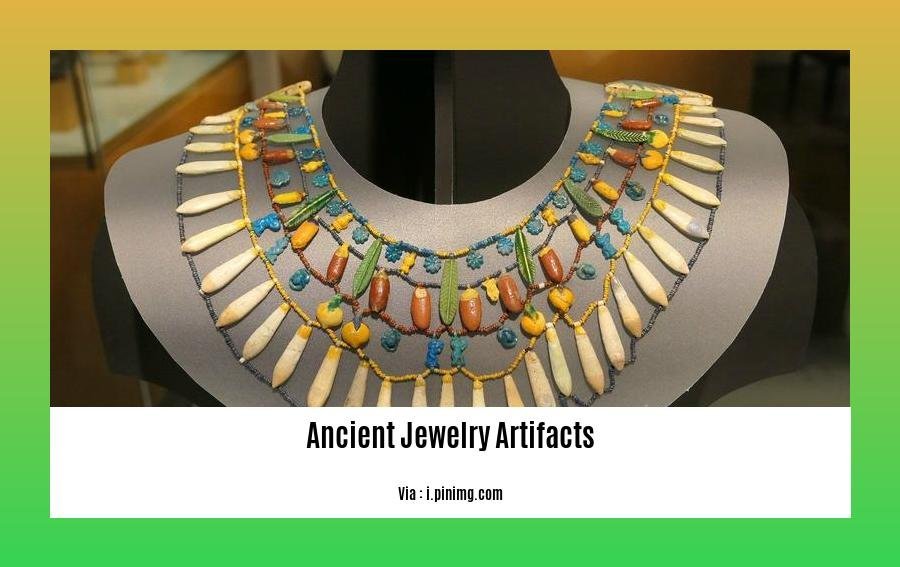
Jewelry, an intrinsic part of human expression, has accompanied us through the ages as a timeless symbol of culture, status, and artistry. From the earliest civilizations to the grand empires of the past, artifacts adorned with precious metals, gemstones, and intricate designs narrate captivating tales of human history and cultural evolution. Join us as we unveil the enigmatic stories behind these treasured adornments, uncovering the profound significance they held in ancient societies.
Key Takeaways:
- Ancient jewelry provided insights into societal hierarchy, religious beliefs, and economic status.
- Exquisite craftsmanship showcased the technical prowess and artistic genius of ancient artisans.
- Jewelry designs reflected cultural influences, symbolizing unity and diversity across civilizations.
- Precious metals, gemstones, and intricate designs held symbolic meanings, often associated with power, protection, and divinity.
- Archaeological discoveries continue to unveil the rich tapestry of ancient jewelry, offering valuable perspectives on past civilizations.
Ancient Jewelry: A Reflection of Cultural Identity
Ornate jewelry pieces adorned the bodies of ancient people, embodying their cultural heritage, beliefs, and social status. These adornments transcended mere aesthetics, becoming powerful symbols that communicated volumes about the wearer’s identity. From the intricate headdresses of Egyptian pharaohs to the delicate gold ornaments of Mesopotamian royalty, each piece spoke of the wearer’s position in society and their connection to the divine.
Craftsmanship and Ingenuity: Artisans of the Ancient World
The creation of ancient jewelry showcased the remarkable craftsmanship and ingenuity of artisans in bygone eras. With limited tools and rudimentary techniques, they transformed raw materials into breathtaking works of art. The intricate designs, delicate filigree work, and skillful gemstone settings showcased their mastery of various metals, including gold, silver, and copper. These artisans were not just skilled craftsmen but also storytellers, imbuing each piece with symbolic meaning and cultural significance.
Cross-Cultural Influences and Shared Symbolism
Ancient jewelry also reveals the interconnectedness of civilizations, highlighting the exchange of ideas, motifs, and techniques across vast distances. Similarities in designs, materials, and symbolism suggest cultural interactions and influences between diverse societies. For instance, the popularity of scarab beetles in Egyptian jewelry found echoes in the jewelry of ancient Greece, reflecting the cultural exchange that took place in the Mediterranean region.
Precious Metals, Gemstones, and Symbolic Meanings
Ancient jewelry often incorporated precious metals and gemstones, each imbued with symbolic significance. Gold, associated with the sun and divine power, was a favored metal among many civilizations. Silver, believed to possess mystical properties, was often used in amulets and talismans. Gemstones, with their vibrant colors and natural beauty, held special meanings. Turquoise, for instance, symbolized protection and good fortune, while lapis lazuli was associated with wisdom and royalty.
Archaeological Discoveries: Uncovering the Past
Archaeological excavations have unearthed a wealth of ancient jewelry artifacts, providing invaluable insights into past civilizations. These discoveries have shed light on ancient craftsmanship, design aesthetics, cultural beliefs, and trade networks. From the opulent gold treasures of Tutankhamun’s tomb to the exquisite jewelry found in ancient Roman villas, these artifacts offer tangible evidence of the artistry and sophistication of ancient societies.
Conclusion:
Ancient jewelry artifacts transcend their physical form, becoming windows into the lives, beliefs, and cultural practices of civilizations that have long vanished. They embody the creativity, symbolism, and craftsmanship of our ancestors, connecting us to the rich tapestry of human history. As we delve into the enigmatic tales of these ancient adornments, we gain a profound appreciation for the enduring legacy of human artistry and the interconnectedness of cultures across time and space.
Sources:
- Ancient Jewelry: 9 of the Oldest Pieces of Jewelry in the World
- Hellenistic Jewelry | Essay | The Metropolitan Museum of Art
Cultural Narratives Embellished: Unveiling Ancient Jewelry’s Enigmatic Tales
Ornate jewelry, like a whisper from the past, speaks volumes about ancient civilizations’ cultural narratives. Delving into their captivating world, we discover intricate designs, precious materials, and symbolic meanings that illuminate the lives of our ancestors.
Key Takeaways:
Sparkling Tales of Prestige and Power: Ancient jewelry served as visual markers of status and authority, adorning royalty, religious figures, and esteemed individuals.
Divine Symbolism and Protection: Amulets, talismans, and protective charms imbued jewelry with spiritual significance, warding off evil and ensuring divine favor.
Expressions of Cultural Identity: Regional motifs and unique designs reflected cultural identity, showcasing ethnic pride and heritage.
Fashion Statements Through the Ages: Jewelry was a reflection of aesthetics, incorporating intricate patterns and innovative techniques that showcased the artistry of ancient artisans.
Bridging Ancient Civilizations: Jewelry unearthed from archaeological sites reveals striking similarities, hinting at shared cultural influences, trade networks, and interconnectedness.
From the intricate gold ornaments of ancient Egypt to the polished jade pieces of China, jewelry transcended its functional purpose, becoming an embodiment of cultural heritage and a testimonial to the ingenuity of ancient artisans.
Unraveling Craftsmanship and Innovation:
Jewelry’s intricate designs and meticulous craftsmanship unveil the technical prowess of ancient artisans. Gold and silver were skillfully wrought into delicate filigree. Stones were painstakingly cut and polished to enhance their brilliance. The manipulation of materials showcased a mastery of various techniques, including granulation, repoussé, and cloisonné.
Jewelry as a Window to the Past:
Jewelry transcends its aesthetic allure, offering valuable insights into the lives, beliefs, and aspirations of ancient civilizations. These artifacts provide a glimpse into social hierarchies, religious practices, and cultural norms. They hold the power to transport us back in time, conjuring images of ancient ceremonies, royal courts, and bustling marketplaces.
Jewelry’s Universal Language:
Across continents and centuries, jewelry has served as a universal language of adornment and expression. Its symbolism, motifs, and designs bear striking similarities, suggesting a shared human experience of beauty, spirituality, and cultural expression. From the beaded necklaces of ancient Africa to the jade ornaments of pre-Columbian America, jewelry unites humanity across time and space.
Conclusion:
Ancient jewelry artifacts are captivating relics of the past, holding the power to unlock cultural narratives and reveal the lives of our ancestors. They offer a glimpse into ancient crafts, cultural identities, and spiritual beliefs, showcasing the ingenuity and artistry of civilizations long gone. As we delve into their enigmatic tales, we gain a deeper appreciation for the enduring legacy of human creativity and the interconnectedness of cultures throughout history.
References:
- Ancient Jewelry: Adornment and Identity
- Jewelry Through the Ages
FAQ
Q1: How does ancient jewelry contribute to our understanding of past civilizations’ cultural and social practices?
A1: Ancient jewelry artifacts offer valuable insights into the cultural, social, and symbolic practices of past civilizations. By analyzing the designs, materials, and techniques employed in jewelry creation, archaeologists can infer information about the wearer’s status, beliefs, and aesthetic preferences, providing a glimpse into the society’s values and artistic expressions.
Q2: What are some of the most remarkable examples of ancient jewelry artifacts discovered to date?
A2: Notable examples of ancient jewelry artifacts include the Neanderthal jewelry found in Croatia, demonstrating early human creative expression; Nassarius shell beads from Northern Africa, showcasing early craftsmanship and aesthetic appreciation; donut-shaped ostrich eggshell beads from eastern Africa, highlighting delicate craftsmanship; and the Chlorite Bracelet from Siberia, an intricate and possibly culturally significant ornament estimated to be 40,000 years old.
Q3: How did ancient civilizations use jewelry to express their cultural identity and beliefs?
A3: Ancient civilizations often incorporated cultural and religious symbolism into their jewelry designs. For instance, the ancient Greeks used motifs inspired by mythology and nature, while the Egyptians incorporated amulets and scarabs into their jewelry to protect the wearer from evil spirits. Jewelry also served as a means of displaying social status and wealth, with elaborate pieces reserved for royalty and high-ranking individuals.
Q4: What factors influenced the design and materials used in ancient jewelry creation?
A4: The design and materials used in ancient jewelry were influenced by various factors, including the availability of resources, technological capabilities, and cultural preferences. The geographical location of a civilization played a significant role, as access to certain materials, such as precious metals and gemstones, varied across regions. Additionally, cultural beliefs and traditions often dictated the types of designs and symbols incorporated into jewelry.
Q5: How can studying ancient jewelry artifacts provide insights into the technological advancements of past civilizations?
A5: By examining the techniques and craftsmanship employed in ancient jewelry creation, archaeologists can gain insights into the technological advancements of past civilizations. The intricate designs, delicate metalworking, and use of sophisticated tools and materials provide evidence of the skill and ingenuity of ancient artisans. These artifacts also shed light on the evolution of jewelry-making techniques over time, allowing researchers to trace the development of craftsmanship and artistic expression across different periods and cultures.
